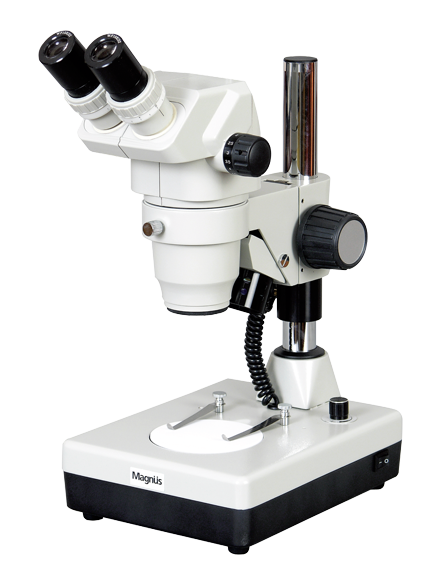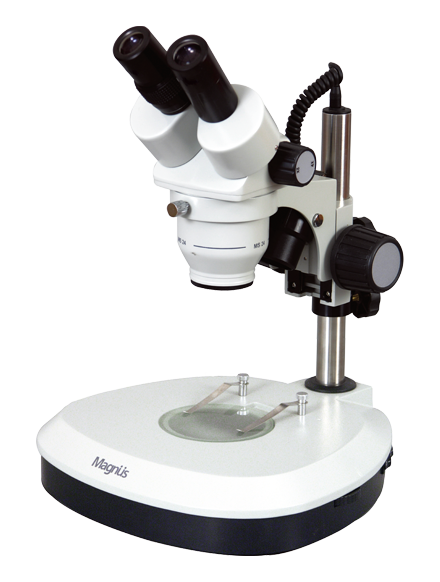Stereo Microscopes
From Lab to Industry: The Growing Demand for Stereo Microscopes
In recent years, the demand for Stereo Microscopes has significantly increased, transcending their traditional use in academic laboratories to find a place in various industrial applications. Once a staple of biology and material science labs, the Stereo Microscope is now an indispensable tool across electronics, forensic science, manufacturing, quality control, and even jewelry design.
What is a Stereo Microscope?
A Stereo Microscope, also known as a dissecting microscope, is a type of optical microscope that provides a three-dimensional view of a specimen. Unlike compound microscopes that offer high magnification for viewing thin slices of specimens, stereo microscopes are used for low magnification observation of a sample, giving users depth perception and a more tangible, spatial view. This makes them particularly suitable for examining solid, opaque specimens.
The typical magnification range of a stereo microscope lies between 10x to 80x, although advanced models may offer higher zoom capabilities. This range is ideal for detailed visual inspection without the need for specimen slicing or staining, which is critical in non-destructive testing environments.
Expanding Industrial Applications
One of the key drivers of the growing popularity of stereo microscopes is their adaptability to various industries. For instance:
- Electronics Industry: In PCB (Printed Circuit Board) inspection and soldering work, stereo microscopes are used extensively to check for solder defects, component alignment, and circuit continuity.
- Automotive and Aerospace Manufacturing: Quality control teams use stereo microscopes to examine minute parts for defects, ensuring product integrity.
- Forensic Science: Crime scene investigators rely on stereo microscopes to analyze hair, fibers, and small debris with clarity and depth.
- Jewelry and Watchmaking: The precise assembly and repair of intricate components require the 3D vision provided by stereo microscopes.
- Entomology and Botany: Scientists use them to study external structures of organisms in detail.
The versatility of the Stereo Microscope makes it a vital investment for a wide range of industries, thus contributing to a surge in demand.
Role of Stereo Microscope Manufacturers
As demand surges, Stereo Microscope Manufacturers have been quick to adapt, offering models that meet the specialized needs of industrial clients. From ergonomically designed microscopes with LED illumination to digital stereo microscopes with integrated cameras and software for image capture and analysis, manufacturers are innovating rapidly.
The global market is populated by well-known Stereo Microscope Manufacturers such as Leica Microsystems, Olympus, Nikon, and Zeiss, as well as emerging regional players. These companies offer a range of options from basic optical models to advanced digital systems.
Local Stereo Microscope Manufacturers in countries like India and China are also making strides by offering cost-effective solutions without compromising essential features. This has opened up opportunities for small and medium enterprises (SMEs) to adopt microscopy in quality control processes.
Advancements Fueling Growth
Recent advancements in imaging technology have also played a critical role in the increased adoption of stereo microscopes. Features such as:
- Digital Integration: The ability to connect microscopes to monitors and computers for image capture, measurement, and documentation.
- Ergonomic Design: Better user comfort for extended use in industrial settings.
- LED Illumination: Energy-efficient lighting with adjustable intensity for improved visualization.
These innovations, spearheaded by Stereo Microscope Manufacturers, have made the instruments more user-friendly and effective, further fueling their acceptance in industries that had not previously relied on microscopy.
The Educational Sector Still Holds Strong
While industrial use is booming, educational institutions continue to be a steady market for stereo microscopes. Science laboratories in schools and universities use these tools to teach students about plant structures, small organisms, and basic dissection techniques.
Stereo Microscope Manufacturers often cater to this segment by offering durable, budget-friendly models that can withstand repeated student use while providing clear, three-dimensional images.
Conclusion
The journey of the Stereo Microscope from a niche scientific instrument to a multi-industry essential tool is a testament to its adaptability and utility. Whether in high-tech industries, artisan workshops, or research labs, stereo microscopes provide clarity, precision, and efficiency.
With continuous innovation and growing industrial demand, Stereo Microscope Manufacturers are poised to play a critical role in shaping the future of visual inspection and analysis tools. As industries increasingly rely on precision and accuracy, the stereo microscope will undoubtedly remain at the forefront of optical technology.
For businesses and professionals aiming to enhance their inspection capabilities, investing in a high-quality stereo microscope from reputable Stereo Microscope Manufacturers could be a game-changing decision.









